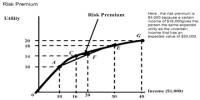Repayment is the act of paying back money previously borrowed from a lender. Sponsored repayment is a personal finance strategy where consumers enter into an arrangement with one or a coalition of sponsors so that a portion of the consumer’s purchases at the sponsor is rebated to fund payments to financial obligations like utility bills, credit cards, and student loans. Repayment terms on a loan are detailed in the loan’s agreement which also includes the contracted interest rate. Sponsored repayment benefits consumers by helping them accumulate rebates to fund payments to creditors and benefits sponsors through encouraging customer loyalty. Any expenses not covered by the sponsor are the responsibility of the student and are to be paid in full by the stated due date on the student account invoice.
Federal student loans and mortgages are among the most common types of loans individuals end up repaying. Sponsored billing occurs when an entity, government, or a third party assumes responsibility for all or part of a student’s educational expenses. Sponsors pay the university directly on behalf of the student with an agreement, commitment, and/or obligation between the paying party and the student.
Sponsored repayment is most effective when consumers earn rewards from purchases they already make and do not overspend in an effort to accumulate rewards, thus reducing the risk of taking on a larger financial obligation than they have the capacity to pay. Loans can usually also be fully paid in a lump sum at any time, though some contracts may include an early repayment fee. All types of distressed borrowers may have several options if they are unable to make regular payments.
Types of Repayment Plans –
- Standard Repayment – Under this plan, you will pay a fixed monthly amount for a loan term of up to 10 years.
- Extended Repayment – This plan is like standard repayment, but allows a loan term of 12 to 30 years, depending on the total amount borrowed.
- Graduated Repayment – Unlike the standard and extended repayment plans, this plan starts off with lower payments, which gradually increase every two years.
- Income-Contingent Repayment – Payments under the income-contingent repayment plan are based on the borrower’s income and the total amount of debt.
- Income-Sensitive Repayment – As an alternative to income-contingent repayment, FFELP lenders offer borrowers income-sensitive repayment, which pegs the monthly payments to a percentage of gross monthly income.
- Income-Based Repayment. Similar to income-contingent repayment, Income-Based Repayment caps the monthly payments at a lower percentage of a narrower definition of discretionary income.
















